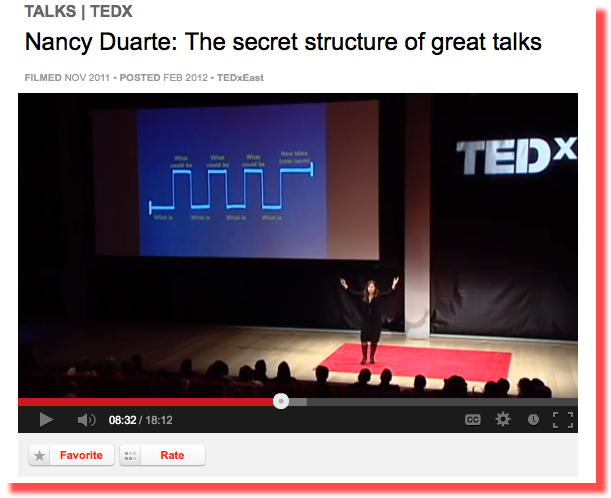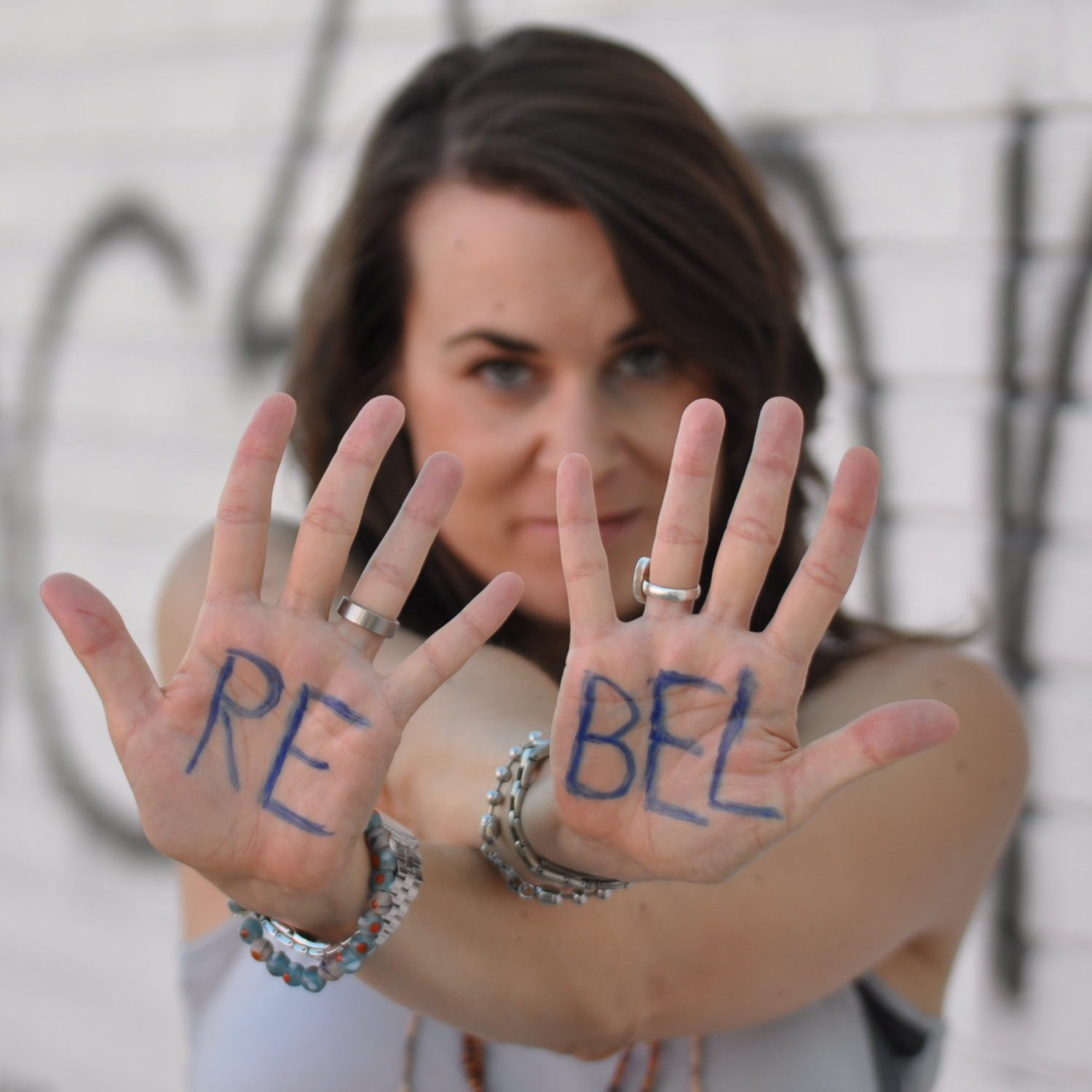Your story matters. Your reasons matter. Your audience wants to know why you’re in business, and they’ll flock to you if you’re telling YOUR story in a compelling way.
So, how do you tell a good story? How do you communicate your vision and the reason why you’re doing what you’re doing so that the people you’re serving WANT to be served by no one else but YOU?
Here’s what NOT to do:
- You don’t get your audience’s attention by throwing “sales pitches” at them.
- You don’t get people engaged by making yourself the hero of your story.
- You don’t inspire people to take action by merely telling them to do so.
In this installment of my Storytelling 101 series, I’ll share with you one storytelling secret that will change the way you’ll tell your brand story and that will inspire people to take action because they share your vision.

Nancy Duarte’s TEDx Talk on story structure
I was fortunate to learn about this secret from Nancy Duarte at the World Domination Summit, which I attended in July 2013. Nancy Duarte is a specialist in persuasion. And in her keynote speech at WDS, she told us how each of us can change the world with our stories.
“If you communicate your idea in a way that resonates, change will happen.” ~Nancy Duarte
As a storyteller Duarte told us that she had been fascinated by story structure and how certain stories would stick. People will share a good story with their friends, and the story will spread further. If told right, your story can create a movement.
What’s happening to the listener when somebody is telling a great story? According to Duarte, we get a physical reaction when listening to a story. Your heart can race, your eyes can dilate; you can feel a chill down your spine or feel it in the pit of your stomach.
In order to figure out the secret ingredients to a great story, Duarte studied literature, cinema and historic speeches. And she shared her findings with us:
- The audience is the HERO of your story. The presenter or storyteller serves as a mentor for the hero. Duarte compared this concept to Hollywood hero archetypes and Star Wars in particular: “You’re not Luke Skywalker, you’re Yoda. You’re the one that helps the audience move from one thing to your new special idea. And that’s the power of story.”
- Story has a shape. The classic dramatic structure of play or film that you’ve probably studied in high school is the Freytag’s Pyramid. German novelist Gustav Freytag introduced us to this dramatic arc in 1863, which consists of: exposition, rising action, climax, falling action, and dénouement. Duarte builds on Freytag’s classic arc and presents us with a story structure for our modern times: the “what is” and “what could be” pattern. Duarte applies this pattern to the greatest communicators of all time, including Dr. Martin Luther King’s famous “I have a Dream” speech and Steve Jobs’ iPhone launch presentation: You start out by establishing “what is” and present your audience with what’s going on right now. Then you need to compare that to “what could be”.
- Make the gap between “what is” and “what could be” as big as possible, or as Duarte pointed out in her talk: “Contrast the commonplace of the status quo with the loftiness of your idea.” You then continue with contrasting the “what is” with the “what could be” throughout your story in order to make the status quo and the normal unappealing. And you want to draw your audience to what could be in the future with your idea adopted.
- End your story with a call to action. End your story or your presentation on the idea of what the world would be like if your vision became true. “This is utopia with my idea adopted. This is the way the world is going to look when we join together, and we solve this problem,” said Duarte.
Here’s the beautiful thing about Duarte’s story structure:
You don’t have to be MLK or Steve Jobs to apply this pattern to your story. Maybe you don’t have aspirations to change the world, but your local community or even just one person’s life. This is where Duarte’s “what is” and “what could be” pattern is powerful: It works in every circumstance and with every idea – big or small – that you want to get out there.
Now, you might experience resistance from your audience. They might be critical of your idea or not wanting to go along at first. That’s where the repetition of contrasting the “what is” with “what could be” comes in. “It’s like sailing,” said Duarte. “You have to sail close to the wind in order to take advantage of it.” Look for the wind. Where is it coming from? Then go there.
Think about this: Whatever business you’re in – whether you sell cupcakes in a little coffee shop, whether you design websites or whether you’re a massage therapist – what’s your “what is”? What’s the status quo you’re seeing on a daily basis?
And then think about this: What could be if you’re idea or vision for your business would come true? Maybe your “what could be” is a new cupcake creation, or a killer web design template? Or maybe it’s a state-of-the-art wellness center that brings people bliss and healing?
How can you tell your story by comparing the “what is” with your vision of “what could be”? And how would your audience become the hero of that story?
I hope that Nancy Duarte’s story pattern is as inspiring to you as it was to me! Let me know what you think about Duarte’s pattern by leaving me a note.
Rebel on!
__
If you liked this blog post, sign up for my rebel letters. You’ll also receive the rebel manifesto to kick-start your uniqueness.
I’ve chosen not to have comments on my blog. To share your ideas with me and other rebels, comment on my Facebook page, or simply write to me. And if you appreciate my work, please share this post by using the social share buttons above this post.
If you would like to have one-on-one direct access to me and dive into discovering your true voice, consider participating in a rebel session for heart-centered entrepreneurs and business owners who desire purpose and profit.
__

